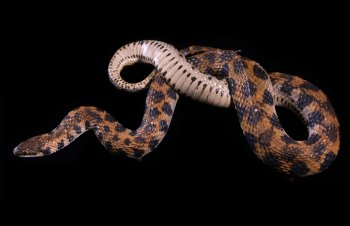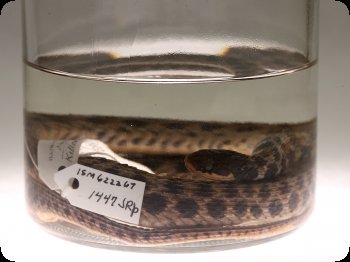Kirtland’s Water Snake (Clonophis kirtlandii)
The Kirtland’s Water Snake shares some similar habitats and habits as the Massasauga Rattlesnake and is also under scrutiny as its numbers continue to decline. It is not venomous, but it uses crayfish burrows like the Massasauga and spends most of its life underground. Biologists hoping to survey the secretive snake often will use a cover board, a corrugated sheet of aluminum that is placed over a crayfish burrow. Scientists will visit the cover boards regularly, lifting them up to see if the snake is hiding underneath. They can be easily identified by the two rows of black dots or dashes on the underside. The belly is often reddish-orange. The status of the Kirtland’s Snake has been under review by the Fish and Wildlife Service, but no federal listing action has been taken.
Research specimens of amphibians and reptiles are usually stored in preservative fluids so they can be studied. However, some of the coloring these animals have in life is lost during the preservation process, and it is impractical to display specimens in their fluid-filled jars. Models, often cast from real specimens, are used in museum displays so visitors can see the natural coloring. The models of the Massasauga and Kirtland’s Snakes were created to provide guidance on size, shape, and field marks.






